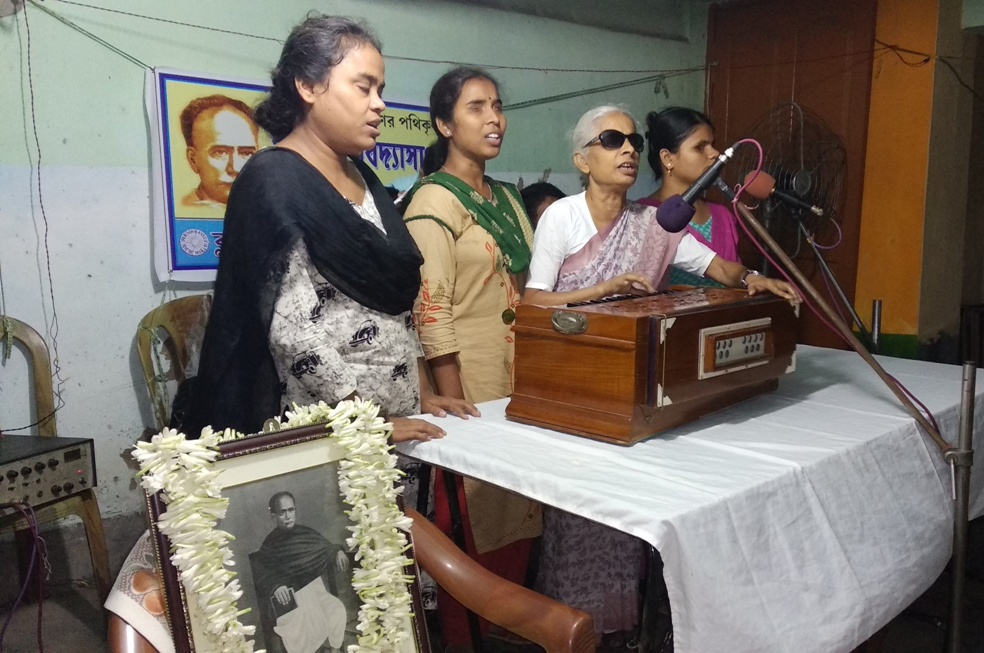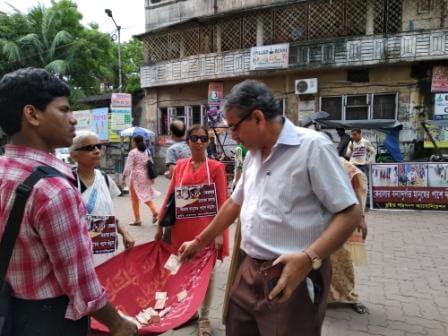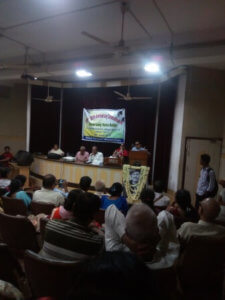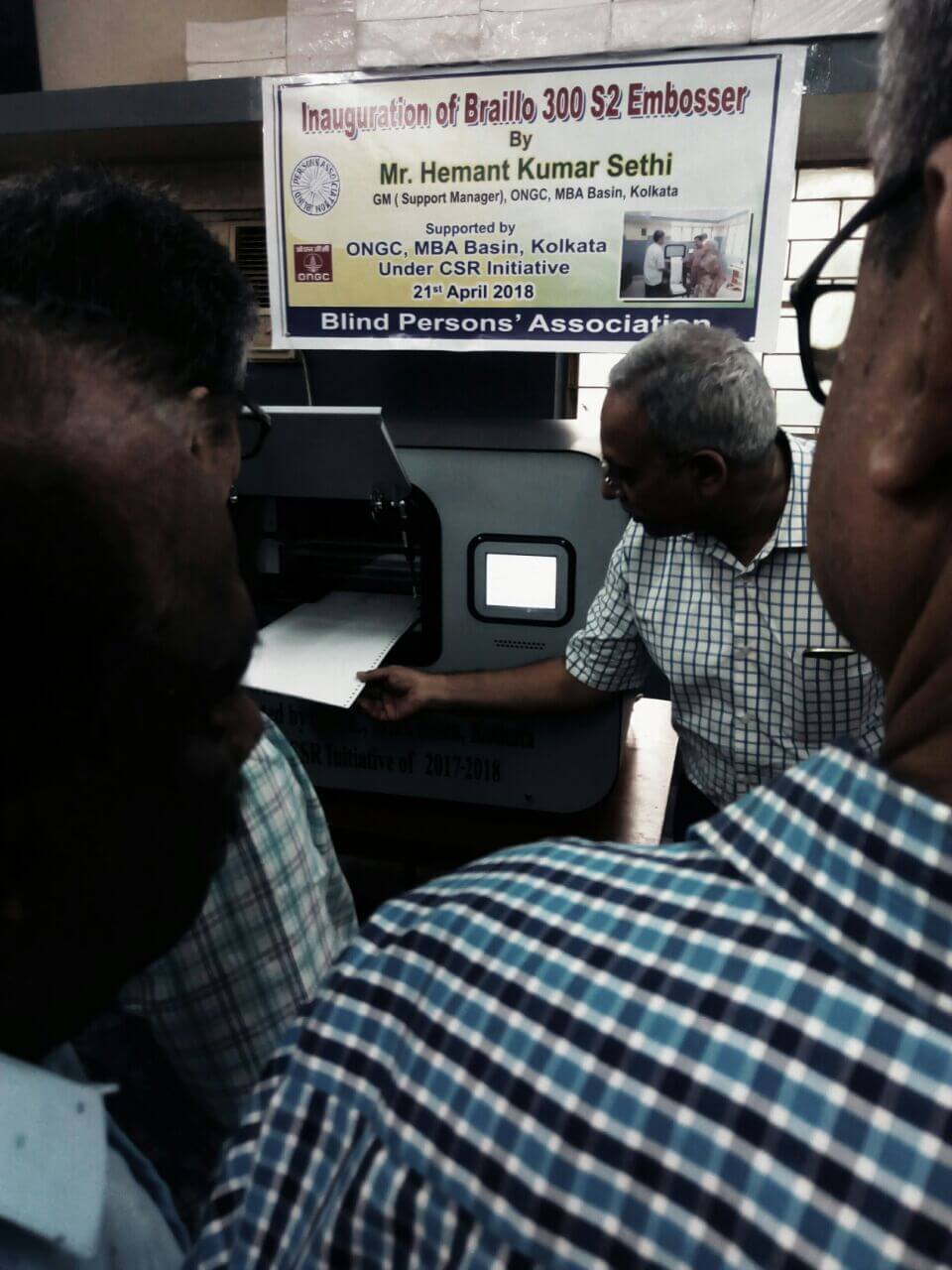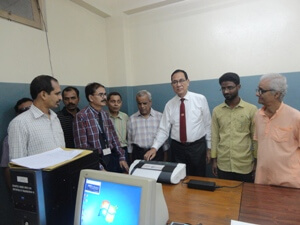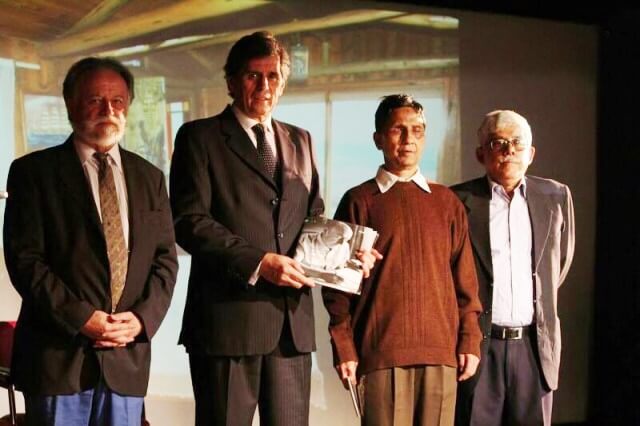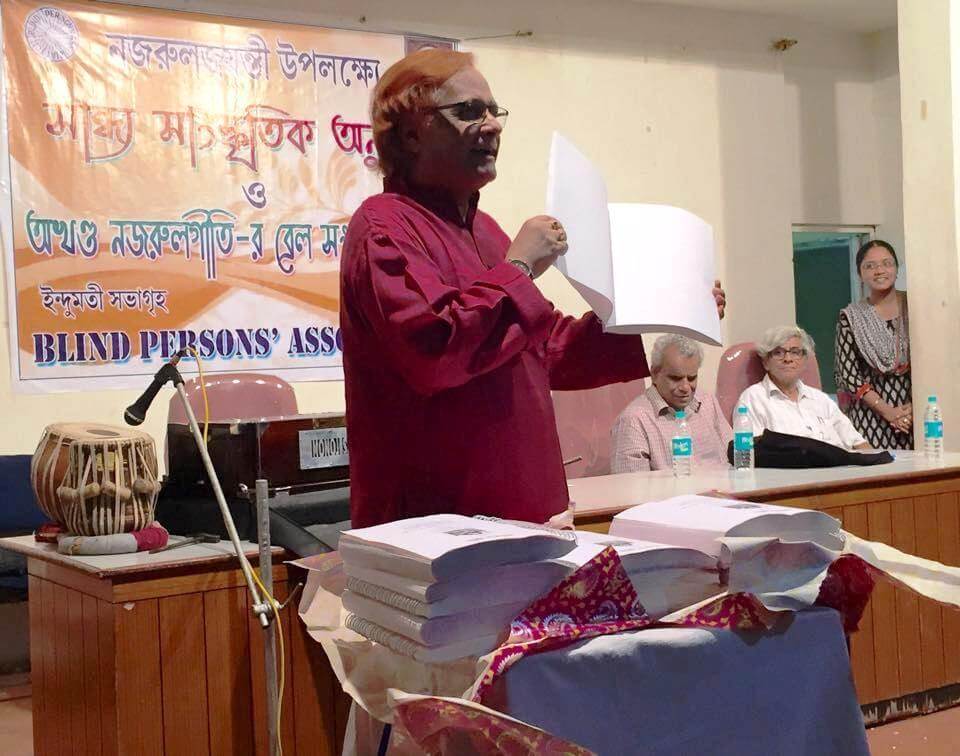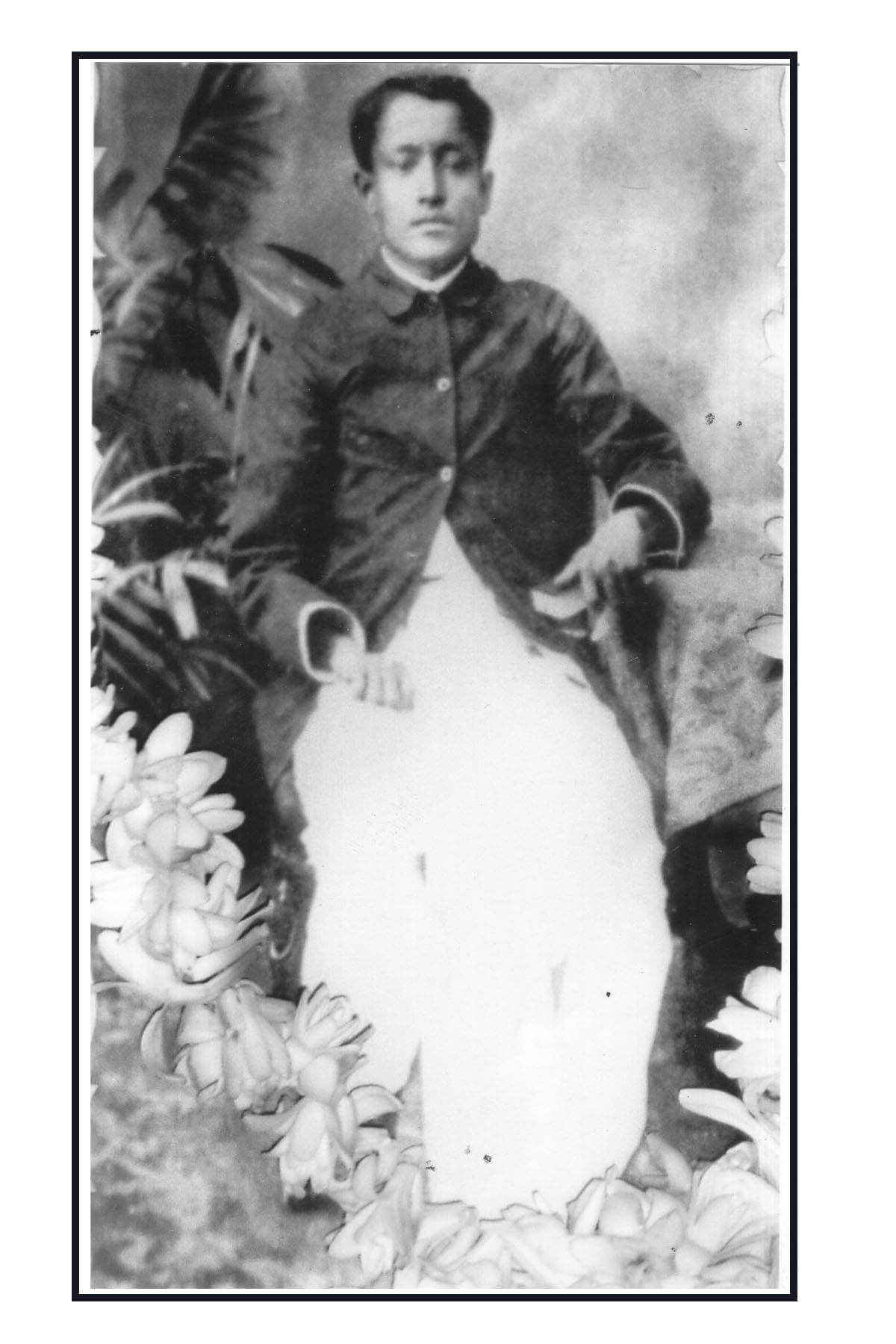The following paper was presented by Shri Amiyo Biswas, former Vice President of the host organisation in the Seminar on “the Significance of Braille System in the present era” organised at H.L. Roy Memorial Hall, Indian Institute of Chemical Engineering, Jadabpur University, Kolkata on August 9, 2008 by Blind Persons’ Association with the aid of Indian Council of Social Science Research (Eastern Region).
If we carefully study the history of science and civilisation, we shall see that the entire history bears proof to the age-old maxim, “Necessity is the mother of invention.” All articles and processes that have helped in the advancement of human civilisation were invented when the society needed it. It may be the invention of the wheel in the Mesopotamia or of paper in China. The society feels the necessity for a tool, people start searching for it and, the desired item is invented through the combined search of some people, at times, through the efforts of generations. If we look into the history behind the invention of braille system, we shall see the same story repeated. Louis Braille was born at a time when society needed someone to master the knowledge and skills gathered so far in tactile writing and devote himself to developing a suitable system. If we closely observe the evolution of the education of the sightless, we shall clearly see a pattern.
Gutenberg’s invention of the printing press in 1439 ushered in the Renaissance in Europe. Scholars attached utmost importance to universal education. About this time some scholars thought of educating the sightless, too. Girolamo Cardano (1501-1576), an Italian mathematician, had pointed out a way of teaching the blind to read and write by the sense of touch. They were to trace with a steel bodkin or stylus the outline of each of the letters of the alphabet, engraved on metal, until they could distinguish the letters by the sense of touch and reproduce them on paper. In 1575 in Rome Rampazetto produced prints in intaglio from letters carved in wood. In 1580 Francesco Lucas of Madrid engraved letters in wood for the instruction of the blind; but the letters being sunk in the wood, the outlines could not as readily be followed with the fingertips. In 1640 Pierre Moreau, a notary at Paris, had movable letters cast for the use of the blind.
All these and many other attempts were made in the wake of the Renaissance which upheld the goal of universal education. The Industrial Revolution in England and the French Revolution in the eighteenth century Europe had a profound impact on the society. In 1749 Dennis Diderot (1713-1784), one of the harbingers of French Revolution, published “An Essay on Blindness” in which he developed the idea of teaching the blind to read through the sense of touch. Establishment of Valentin Haüy’s school in 1784 inspired by Diderot’s idea, shortly followed by a few more, and ingenious methods of tactile reading developed by James Gall, John Alston and William Moon in the early nineteenth century were definite outcome of this impact. The social process reached its culmination in the invention of Braille system in 1824.
Monsieur Louis Braille (1809-1852) invented this system when he was just 15. It was the time when France had gone through the first phase of its historical democratic movement, when the entire Europe was stirred by new inventions, new avenues of knowledge were opening up everyday. There was an urge for spread of education and learning among the people. New schools and institutions were founded for studies. The sightless people who had some access to learning, continuously tried to find out an easy method for reading and writing. Monsieur Braille, then only a schoolboy, felt the same urge for learning. He too started thinking over the problem of reading and writing in some way easily accessible to the sightless people. Charles Barbier’s system of dots showed him the way. By social process, we do not mean that Louis Braille was a mere instrument in the process. His insatiable thirst for knowledge made him look desperately for a method of reading and writing.
One advantage for him was that he was one of the lucky few who got the opportunity to study in Valentin Haüy’s Nationale des Jeunes Aveugles, the first blind school of the world. Haüy used glutiny and sands to create tangible characters on paper which Braille and his fellow-students used for reading at school. It was a difficult and very slow method of reading. When Braille came to the school in 1819, there were only 14 such books. It was not possible for the sightless students to write using the glutinous ink and sands on paper. Like many others in Europe, Braille devoted his time and energy to developing a method of writing.
The invention of braille system has another social implication which often escapes our notice. It was developed and diffused by the sightless themselves. Though it was welcomed by his fellow-students and some of the sightless teachers of the school, it was summarily rejected by sighted teachers. The main objection was that the braille characters did not bear resemblance to normal characters. The sighted teachers had to learn the characters if they had to teach the sightless students. Dots produced by punching on paper are difficult to distinguish by sight on account of both being of the same colour. Moreover, normal letters were well-established in all blind schools, a system adopted by Valentin Haüy himself.
However, his friends realised its potentials. They found their own way of expressing their thought in writing. The method was widely used in communication amongst the sightless students themselves. On the other hand, it provided Louis with ample scope for experimenting with his method. He devised a mechanical system to produce his dot-based characters. He arranged the 63 characters available from the combination of 6 dots in a logical order. His arrangement is still followed even today for its easy approach.
If we thoroughly study the entire process of the invention of braille system, we shall see more such details which not only prove Louis’s persistent effort for a new method, but his scientific bent of mind. Scientific study does not necessarily mean working with instruments and acids in a laboratory. Science means systematic analysis of a problem and finding out solution to the problem. When everyone in the school hostel rested in bed, enjoying the luxury of sound sleep in the middle of night, Louis went on embossing dots on a thick paper, trying different variations of six dots, and looking for ways to represent as many as characters using these six dots. It was not an easy task for a teenager. It demanded hard work, tenacity and perseverance. Louis had all these qualities. But he had to pay the price for it, too. The environment, notes Pierre Henri, one of his biographers, was not congenial. The air was damp, the rooms dark and murky, food scanty. As for study materials, there was hardly any book in the school library to help Louis in his research. Logical arrangement of dots in the best combinations needs experience in mathematics. Selecting best representations for alphabetical characters and punctuation marks required sound knowledge of the French language. Louis found little at school to help him in these matters. Yet he persisted on and on until he succeeded in devising a sound system of dots. Several attempts have been made to improve upon his arrangement. But it is now accepted, the way Louis arranged his characters is best for the fingers.
Braille’s recognition outside France was hindered by the same conservative attitude of the sighted teachers of the sightless. Edmund C. Johnson, Esq., a member of the Royal Commission on the Deaf and Dumb and Blind in England, reported on the Paris Congress in 1878 to his Committee, “We, however, are of opinion that the entire adoption of any arbitrary system, such as Braille’s, would tend to increase that very isolation of the blind which it is thought to lessen, and to cut them off more and more from the rest of the world. We are convinced that they should, as far as possible, read and write, and gather information in the same characters as those used by the sighted. If all men were blind, nothing could be better than Braille; but as, happily, the blind constitute only a small minority, they must be bound fast to the majority by the adoption of that character of letter known to the civilised world.”
The situation changed as sightless scholars like Dr. Thomas Armitage were associated with the education of the sightless. It was through the initiative of Dr. Armitage and his British and Foreign Blind Association (now known as Royal National Institute for the Blind) that braille system became popular in Europe. Dr. Armitage, being blind himself at the age of 36, realised that many of the difficulties surrounding the education of the blind had been produced by sighted managers of blind institutions, who, with the best intentions, had selected types adapted for the eyes of the sighted rather than the fingers of the blind. He and six sightless experts who formed the first council of the Association carefully studied every known type. Types there were in abundance and to spare–Lucas, Frere, Roman, Moon, and many others–but none of them could be written. In 1870 the council decided that the type of the future was to be the one invented by the little-known Louis Braille.
The merits of braille system were recognised chiefly by a few blind teachers on the other side of the Atlantic. Mr. Waite, the inventor of New York Point type, was dead against it as it had fewer representations than New York points, a system of tactile writing already in use in America. Mr. Anagnos, the chief of Perkins Institution for the Blind in Boston, was openly antagonistic to the New York Point, and, being forced to admit into his school some point system for writing purposes, allowed Mr. J. W. Smith, a blind teacher to try his hand at devising a better system. Mr. Smith and his assistants laboured assiduously, rearranged the characters on the principle of frequency of recurrence, eliminated what seemed to them the illiterate crudities of the English system, and called his code “Modified Braille”. It was used in the Perkins Institution from that time on. Once Smith’s “modified braille” was introduced, the acceptance of original braille code in America was only a matter of time.
Life is sometimes eclipsed by achievement. Little information is available on Louis Braille’s personal life. His letters were destroyed. The photograph we find was perhaps taken in his death-bed. Neither he nor any of his friends did realise the importance of keeping record of the events of his life. What we gather from memories of others is amazing. His love for knowledge was coupled with love for his students and friends. He purchased embossed books and writing frames for poor students out of his own savings. In 1839 he gave up his fine old organ and his position as organist at Saint Nicolas des Champs to one of his unemployed pupils. He did not forget charitable organisations along with his near and dear ones in his will. In a preface to one of his books in 1839, he paid tribute to Charles Barbier for allowing him to modify his Sonography into braille system. Barbier, too, accorded full credit to him for his invention. Braille acknowledged contributions of Monsieur Réne Fournier in developing Raphigraphy, a system of representing normal characters in dots. He started calling his method Braille-Foucault since Francois-Pierre Foucault helped him in developing the mechanical device in 1841. Devoid of any outward show, perhaps on account of his ordinary background and austere living, Louis Braille never looked impressive. Major scientific inventions have been possible only by those who had a profound love for the people. Generosity, magnanimity, a profound love for knowledge and an indomitable quest for an access to knowledge were the sterling features of Braille’s character.
When writing did not begin, knowledge was handed down from generation to generation through oral tradition. Sages like Dirghatama, Andha Muni and Tiresias enjoyed respect from the society because the concept of literacy had not yet come into existence. The sightless were gradually banished from the world of letters as civilisation advanced fast with the inception of reading and writing. There were exceptions like Didymus (313-398 A.D.) who despite his lack of vision mastered the whole gamut of sciences then known, and became the chief of the Catechetical School of Alexandria. In general, the best profession the sightless could undertake before the introduction of braille system was that of a minstrel.
Man as a living being tries to find his living in his natural surroundings. What distinguishes him from other beasts is that he has to attain his manhood or humanity. We do not use the word unbestial because, whatever the conduct of a beast is, we never call a cat unfeline or a dog uncanine. But we condemn a man as inhuman if we see him below a particular cultural and ethical standard. This standard cannot be attained without knowledge. Braille has brought before the sightless the opportunity to attain this knowledge. His system has brought to the sightless what reading and writing brought to the normal people. Thanks to National Federation of the Blind, USA for motivating the government to introduce Louis Braille Bicentennial Silver Dollar with the inscription of the word “liberty” on it to mark the 200th birth bicentenary of Louis Braille in 2009. It truly reveals the feeling of millions of sightless people who feel independent when they read or write in braille system. The sightless would have still remained left alone, in an isolated corner, forgotten, ignored, living on the mercy of the society but for braille system.
It appears from the government policy that the system we have obtained through centuries of thought and labour is being taken away from us. When today the access to education for general people is being curtailed, braille system is to be inevitably ignored. Braille production is costly. Braille books are voluminous. Reading and writing in braille system is slow, laborious and difficult to learn. These are some of the objections raised by the modern policymakers. The easy alternative they have found out for sightless children is the method of acquiring some idea through listening. Can we really expect of them anything better? Literacy to them means drawing one’s own name, no matter if one cannot draw one’s father’s name. Learning English means learning some words. It is enough if you can read the label of a product. The exponents of this “Functional Literacy” do not want the common people to traverse different avenues of knowledge.
The only way we can pay our tribute to him is by using braille more and more, carrying and reading braille books in public places and transports that attention is drawn to the system and we have an opportunity to highlight his invention to the people. Braille books are heavy and bulky. But there is no alternative. We have to carry these huge volumes when they are not available in lighter and smaller forms. Nebuchadnezzar travelled with 500 camels carrying his library. He had no alternative. Nebuchadnezzar’s library can now be packed in a pen drive. If we have a computerised braille display, we can read the contents of such a library of e-text in braille. Until we can afford to pay for a small refreshable braille display, which costs around Rs. 80,000, we have to carry braille books for our own interest. Knowledge is light, knowledge is power. This knowledge can never be complete unless we obtain them in braille. Alternative methods seldom give us the satisfaction and pleasure of reading.
Blind Persons’ Association has been striving for decades to reach braille system to the sightless people of the country through the establishment of blind schools. It has set up a braille press to provide the sightless readers with braille books at an affordable price. Let us finish with a real story of a sightless woman published in an old issue of Braille Monitor, the monthly organ of National Federation of the Blind of USA. She lost her sight at an old age. Life became bitter and tasteless to her. In the meantime she had the opportunity of learning braille from a volunteer of some organisation. She felt, she found a new meaning, and she immediately plunged into teaching braille to other sightless people. She started contacting sightless men and women, young or old. She even took tours of neighbouring districts in her mission. One day she was travelling by train for meeting a pupil at a distant town. She requested the train conductor to wake her up at the desired station. It was already past evening. The conductor missed her station. When he told her, she was absolutely frustrated. She got down at the next station and reported to the station master asking for a waiting room. The small station did not have a waiting room. The station master requested her to go back. She refused because that would mean the loss of a braille class for her pupil. Moved by her persistence and determination, the station master finally managed a shelter for her in the local prison. Fortunately, the prison had cells for women prisoners. After one night’s imprisonment our old lady of the story met her sightless pupil the next morning. That is the way we can pay our tribute to the memory of Louis Braille on the occasion of his birth bicentenary.

